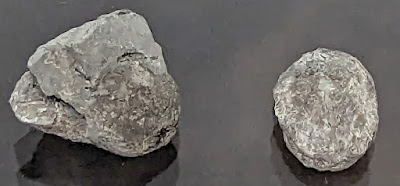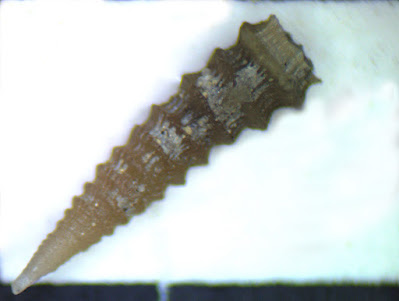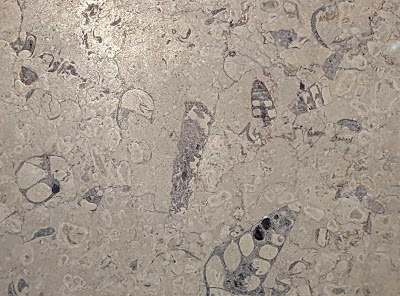Recently, I have been working on a presentation about the 1889 book Kentucky Fossil Shells by Henry Nettelroth (1835-1887). It is an impressive work for amateur paleontologist.
This biographic information appeared in the 1908
publication of Smithsonian Miscellaneous Collections Vol. V Quarterly
Issue Part 2 in an article "The Nettelroth Collection of Invertebrate
Fossils" by R.S. Bassler.
Early Life
"Henry Nettelroth was born in the Kingdom of
Hanover, on June 6, 1835. His family from a remote period were
land-owners, inhabiting that portion of German territory, with estates
located about the village of Nettelrode. Henry Nettelroth
attended the German universities and was graduated as a civil engineer
just before the war between Prussia and Hanover; he was an engineer
officer in the Hanoverian army, but came to America shortly after the
battle of Langensalza (1866). Here he took up the practice
of civil engineering."
Career & Death
"His first employment as topographical engineer on
the Elizabethtown and Paducah Railroad, then building, taking him to
Kentucky, determined his subsequent location in Louisville. In that city
he continued the pursuit of civil engineering,
both active and consultant, until incapacitated by ill health a few
years before his death. He became an American citizen, having
immediately on his arrival in this country renounced allegiance to any
European government. In 1867 he was married, in Louisville,
Kentucky, to Emma Vassmer, also of Hanover. Mr. Nettelroth died on
September 2, 1887."
 |
Henry Nettelroth's grave stone at Cave Hill Cemetery Louisville Kentucky USA
|
Contributions to Paleontology
He had been interested in paleontology while still
in his native country, and it was but natural that the collection and
study of fossils should be continued in connection with a profession
which offered such good opportunities. In his
spare time, therefore, during more than fifteen years, he
enthusiastically collected geological specimens, wisely limiting his
cabinets principally to those fossils found in the immediate vicinity of
Louisville and the Falls of the Ohio, but including, however,
related specimens from other sections of the country. His zeal in this
pursuit stimulated the local interest in paleontology, and there
appeared a number of collectors, several of whom became known later as
capable and discriminating paleontologists. As a
result of the enthusiasm of this coterie, a number of excellent
collections were brought together and some rich beds and fossil-bearing
strata were discovered which are now known universally to geologists.

Mr. Nettelroth's contribution to geological
literature consists of a quarto volume of 245 pages and 36 plates,
entitled "Kentucky Fossil Shells : A Monograph of the Fossil Shells of
the Silurian and Devonian Rocks of Kentucky." This work,
which was issued by the Kentucky Geological Survey in 1889, two years
after the death of its author, is strictly biological in its scope. Over
two hundred species of mollusca from the strata mentioned in the title
were described and illustrated, in addition
to a few Ordovician brachiopoda, sponges, and bryozoa. A short sketch
of geology and paleontology, written for the general reader, introduces
the purely descriptive part, but no particular reference is made to the
geology of the Ohio Falls region. Forty-three
new species were instituted by Mr. Nettelroth, the remainder being for
the most part re-descriptions and illustrations of forms described by
others in various scattered publications."
Legacy
After his death, two paleontological things happened. First, his reference to his best fossils was published by
Kentucky Geological Survey in 1889. Second, his two sons, H.H. Nettelroth (1871-1936) and Dr. Alexander Nettelroth (1869-1952)
of Louisville, Kentucky sold about 8,000 fossil specimens to the
Smithsonian Institution and U.S. National Museum in 1907. The collection
still exists today housed in the collections of the Department of Paleobiology, National Museum of Natural History, Smithsonian Institution.
As a point of Louisville interest, after Herman
Nettelroth's wife Mary Aylett Buckner Nettelroth (1880-1957) died, she
setup in her will that a trust be setup for charitable giving to certain
causes in Jefferson County, Kentucky. The Courier Journal reported that after her husband died December 10, 1936 he left in his will $118,000 to her. After she died April 24, 1957 The Courier Journal reported her estate of about $600,000 set up the Herman H. Nettelroth Fund administrated by Citzens Fidelity Bank & Trust Company. The newspaper reported in an June 17, 1958 that the fund would create an one acre fenced bird sanctuary at Cherokee Park that would have a three-tier fountain and bird bath. It provided $500 to setup the sanctuary and about $150 each year for maintenance & bird seed.
The Fund would help with eight civic projects: bird sanctuary, "the providing for and equipping of children's playgrounds", "establishment and maintenance of day nurseries for working mothers", University of Louisville scholarships, "promotion of animal rescue work", money to buy children's books for public libraries, "support of the community chest", and "support of disaster-relief work of the Red Cross".
As of 2019, the Herman H Nettelroth Fund had grown to $2.4 million in assets and distributed 8 projects totaling $134,000. PNC Bank now administrates the fund. This LINK will show who they distribute money to (e.g. U of L, Metro United Way, Louisville Free Public Library, YMCA)
Looking back at past Courier-Journal issues, an
auction notice appeared in 1978 The Courier-Journal classified section listing. "LIQUIDATION OF SMALL ANTIQUE SHOP AND OTHER CONSIGNMENTS WED. July 19th, 1978 12 NOON... A collection of rocks and Indian arrowheads from the collection of Henry Nettelroth a noted Paleontologist of the Falls of the Ohio Region, included are Flint arrowhead, stone tools, igneous rocks, fossils, corals, etc. AUCTIONS UNLIMITED DOUG WEST AUCTIONEER" So it appears not all of the Nettelroth collection went to the Smithsonian.
As of June 2023, one of his spiny snail Platyceras dumosum fossil specimens can be viewed at the PLAYING THE NUMBERS display of the first floor at the Smithsonian's Museum of Natural History.




















































